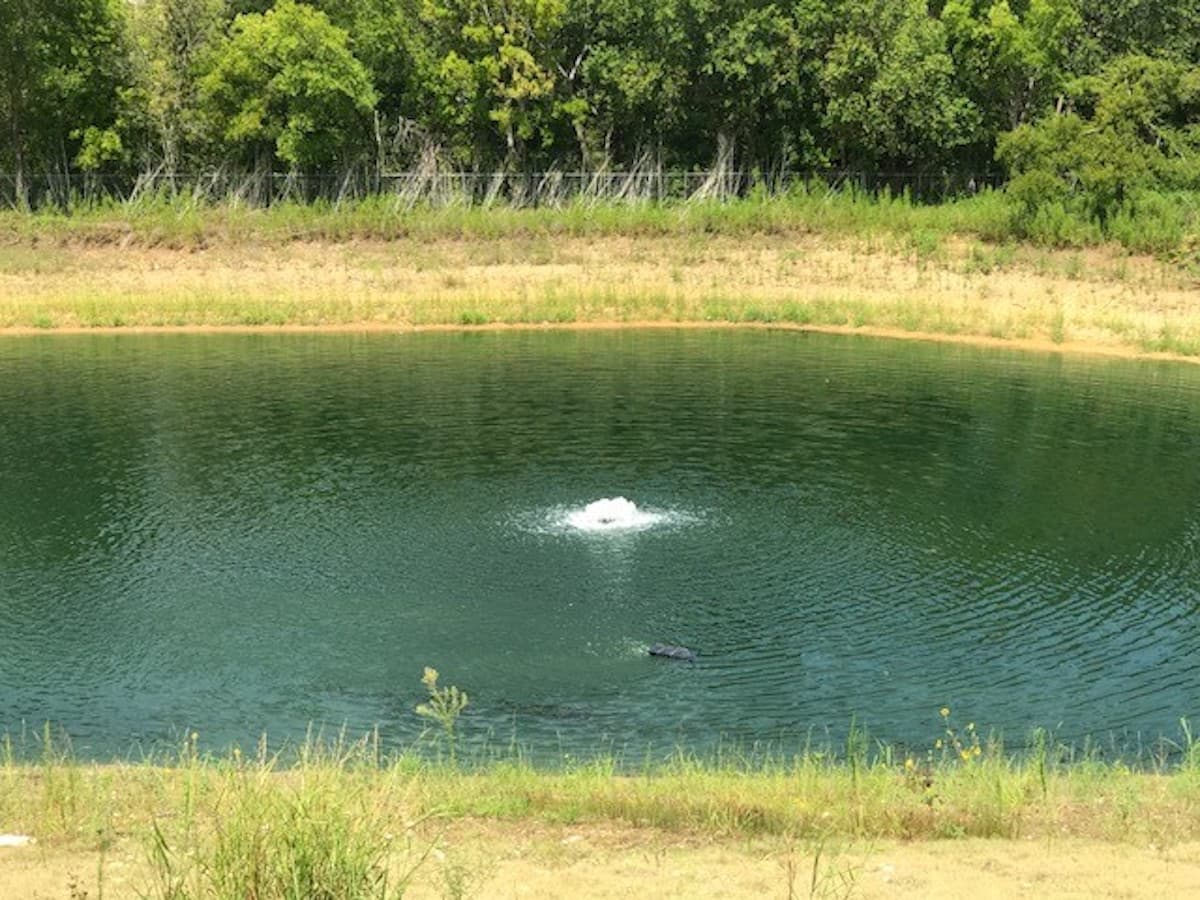By: Kasco Staff | Feb. 10, 2016
____________________________________________________________________________________________
With the increased popularity and expanded use of ponds for a multitude of purposes, the demand for new, environmentally friendly techniques for the maintenance and rejuvenation of these ponds has also grown. Considering the costs of constructing a pond, it makes good economic sense to prolong the life of your pond. One of the simplest and most economical ways of doing this is to use aeration.
Aeration is the process of adding oxygen to water. Maintaining healthy levels of dissolved oxygen (DO), one of the most, if not the most important water quality parameter in your pond, aids in the breakdown of decaying vegetation and other sources of nutrients that enter your pond. This breakdown of bottom muck is carried out by microorganisms at the water/soil interface and continues to proceed a few centimeters deep in the soil.
This decomposition can be carried out in two ways, aerobically and/or anaerobically. Aerobic decomposition requires a continuous supply of oxygen and proceeds more rapidly as dissolved oxygen concentrations near saturation levels. The rate of degradation of organic matter in anaerobic conditions is not as rapid as under aerobic conditions, and the end products are organic compounds, such as alcohols and foul-smelling organic acids (the sulfur, rotten egg pond muck smell!). In other words, the decomposition is slower and less complete in anaerobic environments than in aerobic habitats where the primary end product of decomposition is carbon dioxide. So what we can learn from this is, the more decomposition we can facilitate, through the addition of oxygen with aeration, the less nutrients there will be available for algae blooms and excess aquatic plant growth.
Mother Nature supplies, at times, sufficient amounts of aeration and dissolved oxygen through wind, rain, splashing of water from an incoming stream or waterfall, and by photosynthesis carried out by aquatic vegetation within the pond. However, as nutrients are added to the pond or body of water from sources such as runoff, wildlife waste, dust from construction sites, grass clippings, and leaves from nearby trees, the demand for oxygen increases. When you add that to the fact that warm summer water holds less dissolved oxygen, and the demand for it increases during this time, you have a formula for fish kills, algae blooms, foul odors, and the buildup of stagnant vegetation.
Aeration can help Mother Nature keep up with the demand for dissolved oxygen and prolong the life of your pond. Aeration increases the level of dissolved oxygen so normal biological processes in a pond system can become balanced. It also helps to move water in low circulation areas (which otherwise can build up undesirable levels of algae), and facilitates mixing throughout the pond if chemical treatment is necessary. In short, aeration provides a way to help clean up stagnant ponds and improve water quality for irrigation purposes.
Fish Health Benefits
• Feeding – Fish use up to 10 times the amount of oxygen while feeding as they do at rest. Therefore, the more oxygen you have in the water, the more often fish can feed. The more they can feed, the larger and faster they can grow.
• Density – The more fish you have, the more oxygen demand there will be. Aeration can allow you to increase the density of fish higher than would normally survive in the pond.
• Disease – Oxygen allows a fish’s metabolism and immune system to work better. They can fight off diseases easier and more quickly with proper oxygen levels.
• Stress – When fish become stressed due to low oxygen levels and high water temperatures, they will not feed and can easily succumb to the conditions and die. Providing proper oxygen levels will allow for healthier fish.

Pond Health Benefits
• Plants – During daylight hours, plants provide oxygen through Photosynthesis. However, at night, they take up oxygen. Supplemental aeration will not only help maintain the plants during this time, but also provide adequate oxygen so fish do not suffer as a consequence. Aeration also will buffer your fish from rapid drops in oxygen due to large plant or algae die offs.
• Bacteria – Billions of natural bacteria in your pond work around the clock eating organic material that is in the water. This is crucial to pond health because less organic matter means deeper, cleaner water. Bacteria help prevent your pond from filling in with organic debris and crowding out fish. These bacteria work at peak efficiency when there is plenty of oxygen in the water. With aeration, they can do their job without lowering oxygen levels so much that fish die.
• Odor & Gases – Proper oxygen levels help reduce and prevent foul pond odor. Have you ever notice that rotten egg smell from the muck in your pond? That is caused by incomplete decomposition of the organic material because there is not enough oxygen. Proper oxygen and surface agitation, a side benefit of aeration, will help eliminate these odors and vent off the harmful gases in your pond that could harm your fish.
• Other Organisms – Besides fish, plants, and bacteria, there are many other living organisms using the pond and each benefits from more oxygen levels. Insect larvae, leeches, frogs, turtles, etc. all benefit from a properly aerated pond.